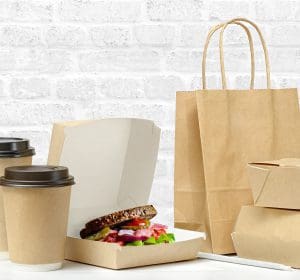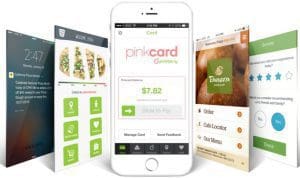2 min read
FOMO Alert! 9 Reasons Why You Can’t Miss PXUX 2019
PXUX isn’t just any conference – it’s an experience. It’s a group of likeminded people who are focused on optimizing the guest journey, building a...
Platform
What is Paytronix Guest Engagement Suite?
Combining online ordering, loyalty, omnichannel messaging, AI insights, and payments in one suite. Paytronix delivers relevant, personal experiences, at scale, that help improve your entire digital marketing funnel by creating amazing frictionless experiences.
A Complete Guest Engagement Suite
Online Ordering
Acquire new customers and capture valuable data with industry leading customization features.
Loyalty
Encourage more visits and higher spend with personalized promotions based on individual activity and preferences.
Catering
Grow your revenue, streamline operations, and expand your audience with a suite of catering tools.
CRM
Build great customer relationships with relevant personal omnichannel campaigns delivered at scale.
Artificial Intelligence
Leverage the most data from the most customer transactions to power 1:1 marketing campaigns and drive revenue.
Payments
Drive brand engagement by providing fast, frictionless guest payments.
Solutions
Paytronix Guest Engagement Solutions
We use data, customer experience expertise, and technology to solve everyday restaurant and convenience store challenges.
FlightPaths are structured Paytronix software onboarding journeys designed to simplify implementation and deliver maximum ROI.
Customer Success Plans (CSPs) are tiered service offerings designed to help you get the most from your Paytronix software, whether you prefer self-guided support or hands-on partnership.
Contactless Experiences
Accommodate your guests' changing preferences by providing safe, efficient service whether dining-in or taking out.
Customer Insights
Collect guest data and analyze behaviors to develop powerful targeted campaigns that produce amazing results.
Marketing Automation
Create and test campaigns across channels and segments to drive loyalty, incremental visits, and additional revenue.
Mobile Experiences
Provide convenient access to your brand, menus and loyalty program to drive retention with a branded or custom app.
Subscriptions
Create a frictionless, fun way to reward your most loyal customers for frequent visits and purchases while normalizing revenues.
Employee Dining
Attract and retain your employees with dollar value or percentage-based incentives and tiered benefits.
Order Experience Builder
Create powerful interactive, and appealing online menus that attract and acquire new customers simply and easily.
Loyalty Programs
High-impact customizable programs that increase spend, visit, and engagement with your brand.
Online Ordering
Maximize first-party digital sales with an exceptional guest experience.
Integrations
Launch your programs with more than 450 existing integrations.
Loyalty Programs
Deliver the same care you do in person with all your digital engagements.
Online Ordering
Drive more first-party orders and make it easy for your crew.
Loyalty Programs
Digital transformations start here - get to know your guests.
Online Ordering
Add a whole new sales channel to grow your business - digital ordering is in your future.
Integrations
We work with your environment - check it out
Tobacco Reporting
Comply with AGDC 2026 DTP Requirements
Company
We are here to help clients build their businesses by delivering amazing experiences for their guests.
Meet The Team
Our exceptional customer engagement innovations are delivered by a team of extraordinary people.
News/Press
A collection of press and media about our innovations, customers, and people.
Events
A schedule of upcoming tradeshows, conferences, and events that we will participate in.
Careers
Support
Paytronix Login
Order & Delivery Login
Resources
Paytronix Resources
Learn how to create great customer experiences with our free eBooks, webinars, articles, case studies, and customer interviews.
FlexPoint Service Catalog
Access FlexPoints are a cost-effective, flexible way to access our value-added services, to ensure you get greater impact from your Access software solution.
See Our Product In Action
E-Books
Learn more about topics important to the restaurant and c-store customer experience.
Reports
See how your brand stacks up against industry benchmarks, analysis, and research.
Blog
Catch up with our team of in-house experts for quick articles to help your business.
Case Studies
Learn how brands have used the Paytronix platform to increase revenue and engage with guests.
Unlock loyalty strategies that 3 out of 4 restaurants use to boost engagement by 40% without adding staff.
1 min read
May 10, 2019

Delivery has become a hot trend throughout most consumer industries. Amazon Prime Now is delivering more food and other essentials to customers across the country, Starbucks is flirting with delivery, McDonald’s is partnering with Uber Eats, and even 7-Eleven has begun beer delivery in some states.
Given these developments, should convenience stores begin offering delivery? And if so, how should they do it?
It’s no secret that consumer demand is driving the push for delivery. In fact, 52% of millennials would buy from c-stores more frequently if delivery options were offered. And as the generations preceding millennials continue to age, they’ll rely more on delivery as well.
The increased competition comes from both inside the industry – with mega-chain 7-Eleven exploring its options – and outside the industry – with behemoth Amazon moving into the traditional c-store space. Convenience stores may be facing an “adapt or die” proposition, and there are a number of issues that should be addressed before delivery is offered.
First, c-stores need to decide whether to build their own delivery infrastructure or rely on third-party delivery companies like Uber Eats and GrubHub.
Second, c-stores need to weigh the costs and consider the margins involved with selling products. Some third-party delivery services take as much as 30% of an order’s revenue, while in-house delivery has its associated costs too. The less expensive items that many c-stores rely on for revenue should be priced to ensure profitability – or at least breaking even.
Third, c-stores need to think about the control of their customer data. Third-party deliverers often don’t pass along the valuable data that makes subsequent targeted marketing effective. If handling delivery in-house, c-stores need to collect and process this data in a way that helps turn delivery recipients into regular, engaged customers.
Fourth, c-stores need to determine which products to offer for delivery, how to package them to ensure that they arrive in good shape, and the legality of delivering liquor, cigarettes, and other behind-the-counter items.
In case all of this seems a bit overwhelming, we have created an on-demand training called “Convenience Stores and Home Delivery: Yes or No?” This free, streaming video examines the pros and cons of both third-party and in-house delivery systems. It also covers the essential “Four P’s” of any delivery program – product, price, place, and promotion.
The half-hour video is packed with information to help you make an informed decision about delivery and begin creating your own profitable delivery program. Click here to watch “Convenience Stores and Home Delivery: Yes or No?” now.

2 min read
PXUX isn’t just any conference – it’s an experience. It’s a group of likeminded people who are focused on optimizing the guest journey, building a...

6 min read
This year’s Paytronix User’s Conference was unconventional, to say the least; but thanks to our incredible clients, the first-ever virtual PXUX was...

2 min read
Your guests are going through their phones right now and deleting apps they don’t use. Why would they keep yours?